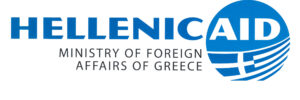The development community agrees on the need to address conflict and fragility for global security and sustainable development. Peace is a global public good, the focus of the 16th Sustainable Development Goal and a cross cutting ambition of the 2030 Agenda. The effects of conflict and fragility transcend borders, violating the human rights of those directly affected as well as causing huge population displacement and refugee flows, putting pressure on their host communities.
The OECD States of Fragility Framework saw an increase in the total number of fragile contexts from 56 in 2016 to 58 in 2018, with the same 15 contexts still considered as extremely fragile. Somalia, South Sudan and Central African Republic confirmed their place as the top-three most extremely fragile contexts. Spurring virtuous, sustainable and peaceful growth in these contexts is even more crucial, considering that they represent about 24% of the global population. If no action is taken, more than 80% of the world’s poorest people could be living in fragile contexts by 2030.
Blended finance is defined as “the strategic use of development finance for the mobilisation of additional finance towards development in developing countries”. This practice is rapidly gaining traction among development finance providers, as 17 of the 30 DAC members already carry out blended finance activities and more donors are looking to enter this field. Out of the USD 157 billion in private finance mobilised for development from 2012 to 2017, less than a fifth (i.e. USD 28.8 billion) went to contexts considered as fragile. In fragile areas, as for all developing countries, most of the private finance was mobilised through a multilateral channel: over 60% of the USD value.
This paper analyses the OECD-DAC statistics on amounts mobilised from the private sector by official development finance interventions, from 2012 to 2017, against the multidimensional lens presented in the OECD 2018 States of Fragility Framework. The data shows a positive relationship between blending opportunities and economic, political and environmental security. The amounts of private finance mobilised increase, as a country’s economic, political and environmental fragility decreases. The way blended finance interplays with societal fragility and security remains unclear, as these two dimensions exert more complex influence on the trade-off between perceived risks and anticipated returns, which typically guides private investors.
More information: https://www.oecd-ilibrary.org/docserver/f5e557b2-en.pdf?expires=1576660015&id=id&accname=guest&checksum=38983E9DA4751F1ECEA530D748DB507F
